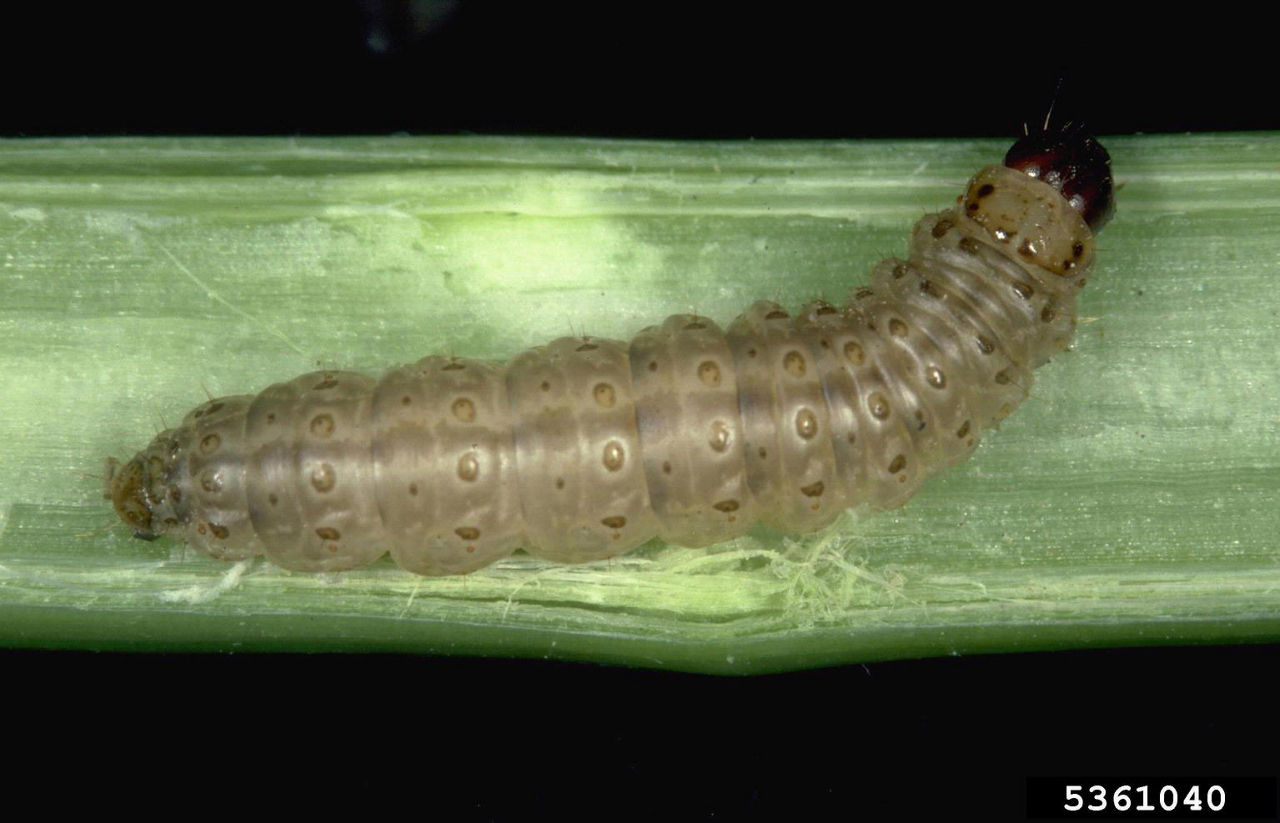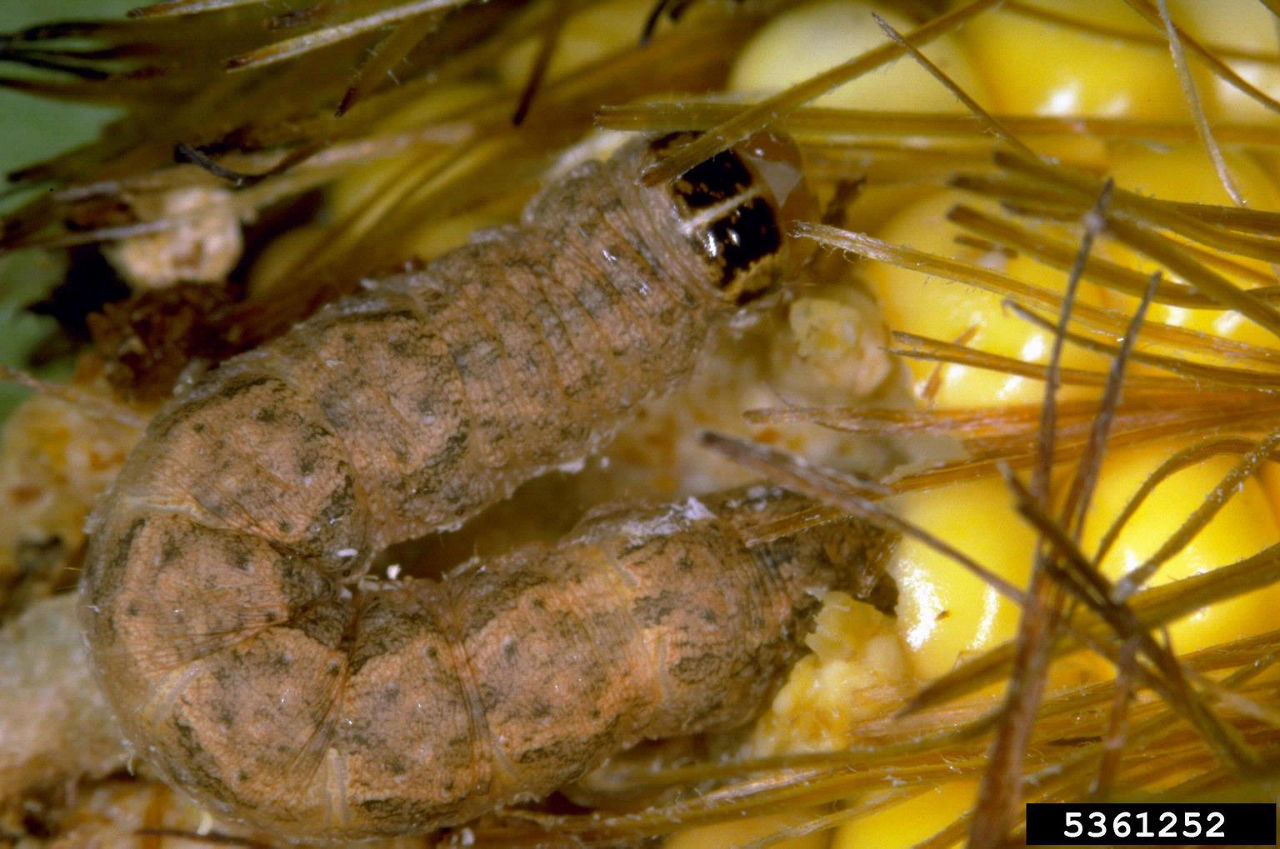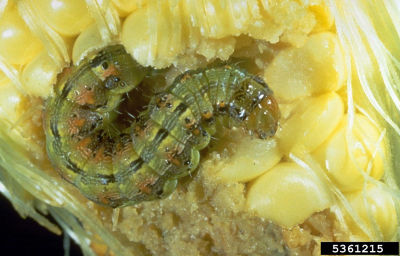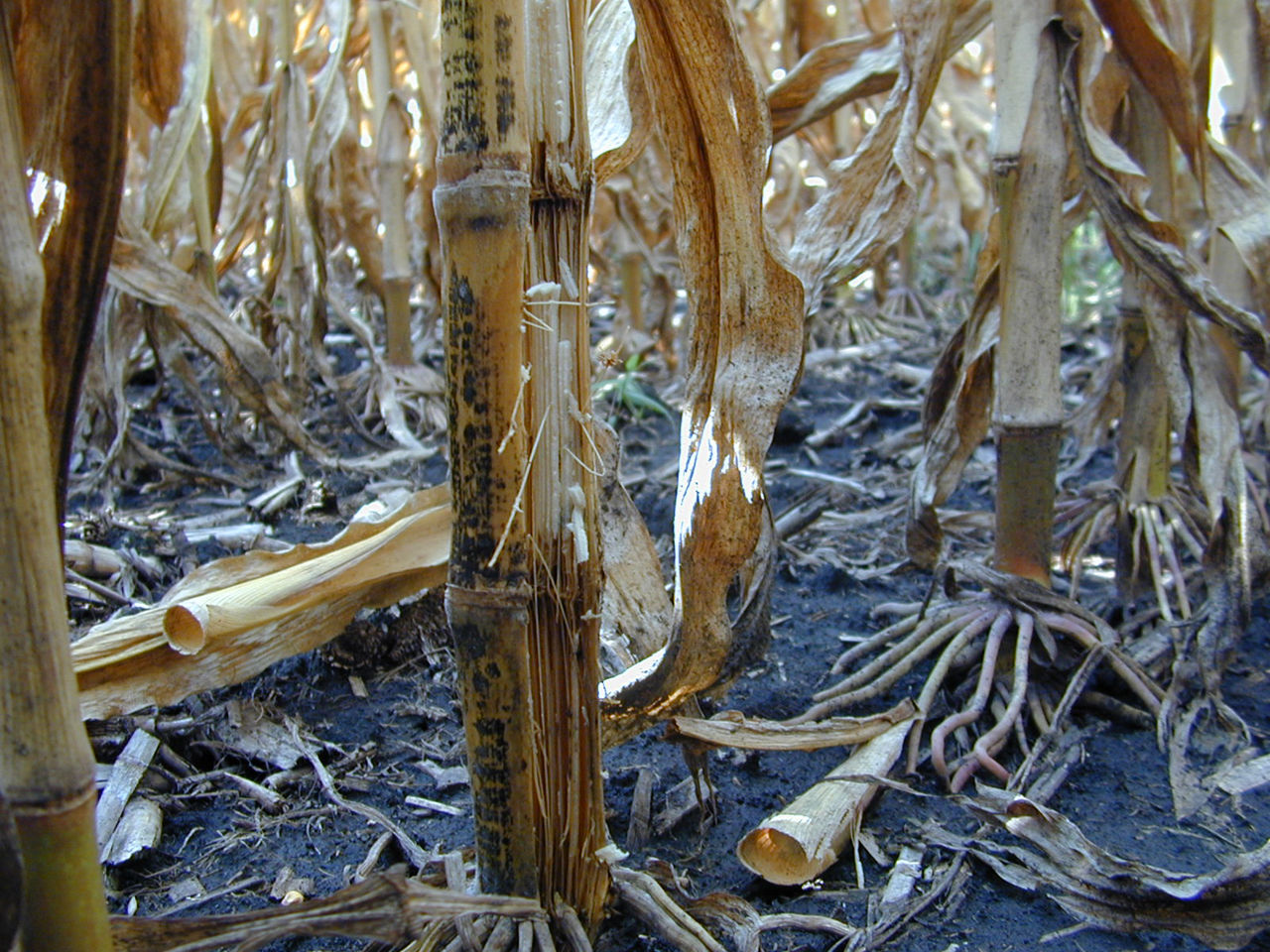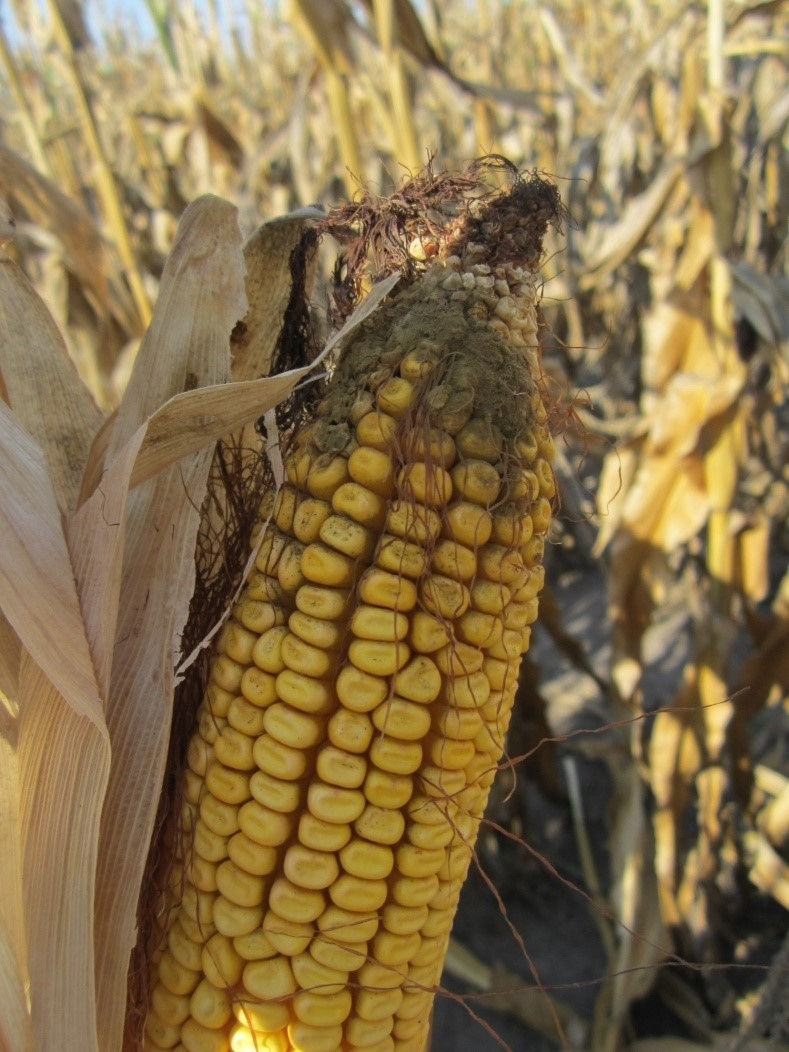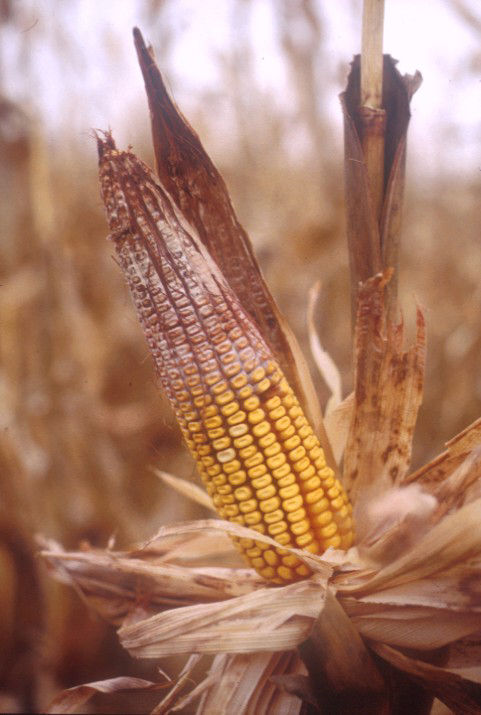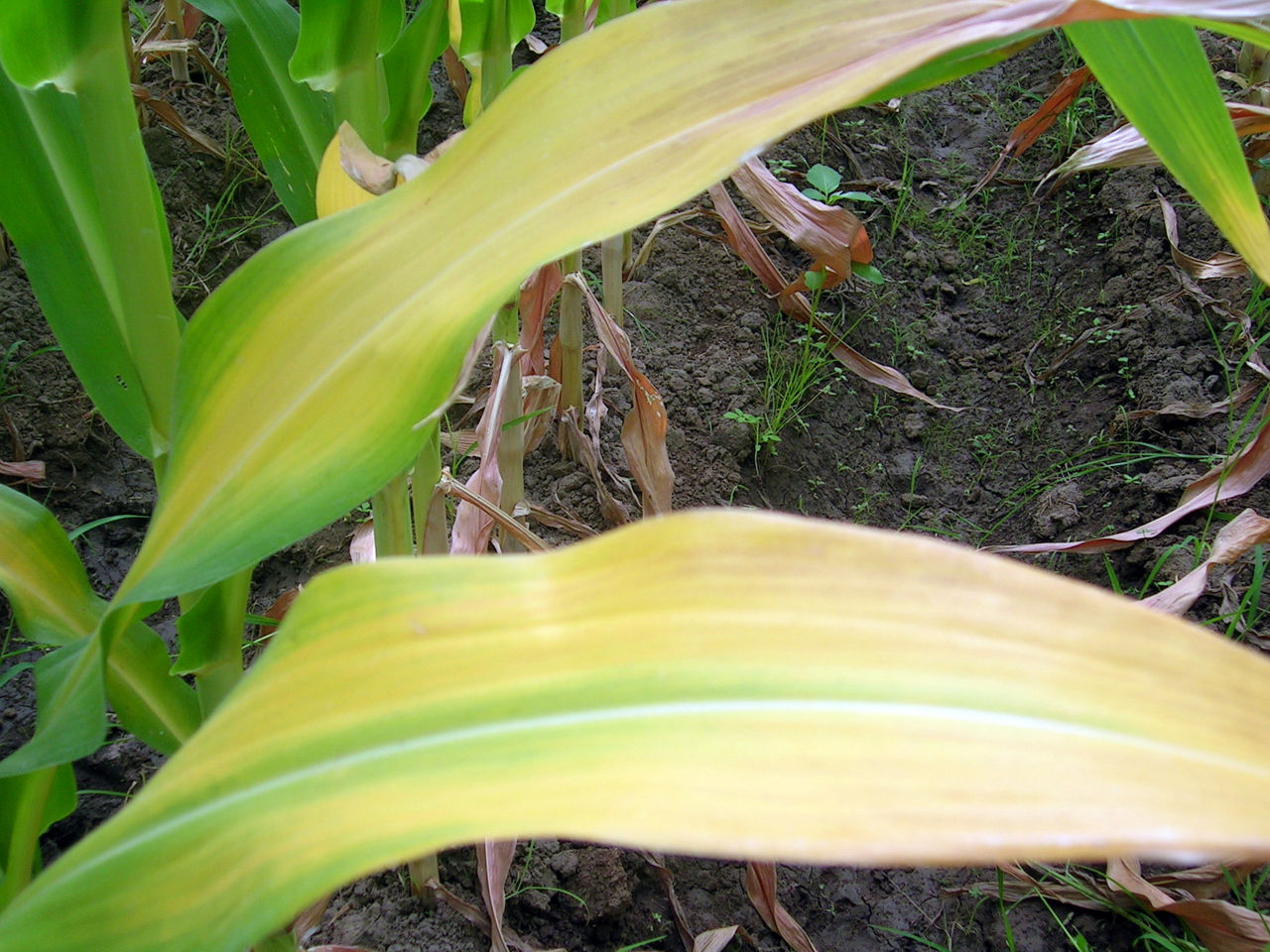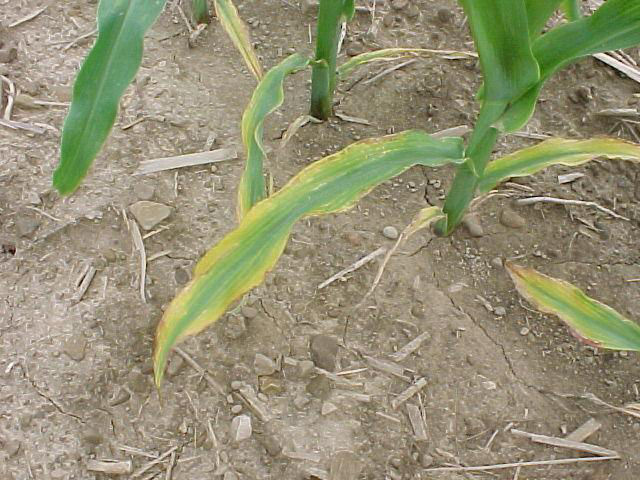7 MIN READ
Late-Season Scouting to Plan for Harvest and Next Season
August 29, 2025
Other Late Season Ear Feeding Insects
Stink bugs and picnic beetles can also be found feeding on corn late season. Stink bug injury to kernels causes a scarring or bruising appearance on the kernels. Injury is typically found at the ear tip.3 Picnic beetles are often found feeding on fermenting kernels that have been injured by other insects or birds.1
For additional information on stink bugs, please visit Common Stink Bugs in Corn.
Stalk and Ear Rots
There are several stalk and ear rots that can occur. Stalk rots are frequently favored by good to excellent growing conditions early in the season that encourage maximum kernel set and development followed by stress during grain fill. Carbohydrate remobilization, unbalanced soil nutrients, compaction, and lack of sunny days are some stress factors that may predispose the plant to infection by stalk rots. Common stalk rots include Anthracnose (Figure 2a), Diplodia, Fusarium, Gibberella (Figure 2b), and charcoal rot.4,5
Sources
1Dean, A. and Hodgson, E. 2020. What insects are in my (corn) ears? Integrated Crop Management. Iowa State University. https://crops.extension.iastate.edu/post/what-insects-are-my-corn-ears.
2Michaud, J. P. 2024. Southwestern corn borer. Department of Entomology. Kansas State University. https://entomology.k-state.edu/extension/crop-protection/corn/swcb.html.
3Reisig, D. and Heinger, R. 2023. Stink bug management in corn. North Carolina State University Extension. https://corn.ces.ncsu.edu/corn-insect-management/scouting-and-thresholds/stink-bug-management-in-corn/.
4Thelen, M. 2012. Late-season scouting of corn and soybean fields is worth the effort. Michigan State University Extension. https://www.canr.msu.edu/news/late-season_scouting_of_corn_and_soybean_fields_is_worth_the_effort.
5Jackson, Ziems, T. 2016. Scouting for stalk and ear rot diseases. CROPWATCH. University of Nebraska Institute of Agriculture and Natural Resources. University of Nebraska-Lincoln. https://cropwatch.unl.edu/2016/scouting-ear-and-stalk-rot-diseases.
6Sawyer, John. 2004. Nutrient deficiencies and application injuries in field crops. IPM 42. Iowa State University Extension. https://crops.extension.iastate.edu/files/article/nutrientdeficiency.pdf.
1214_147982
